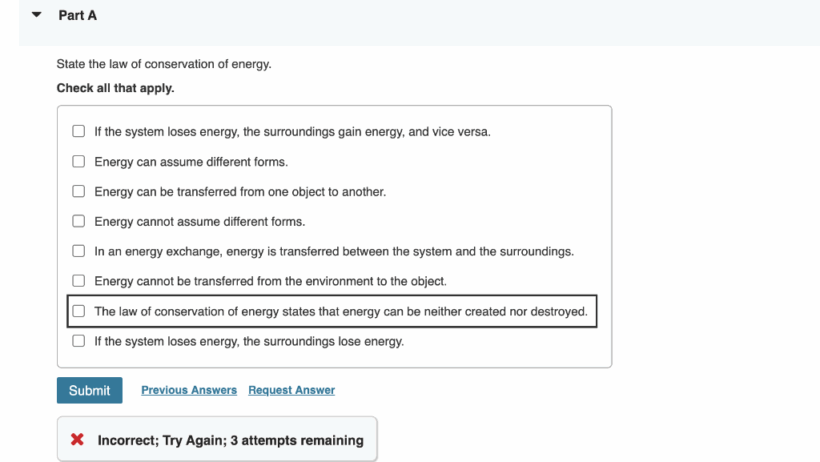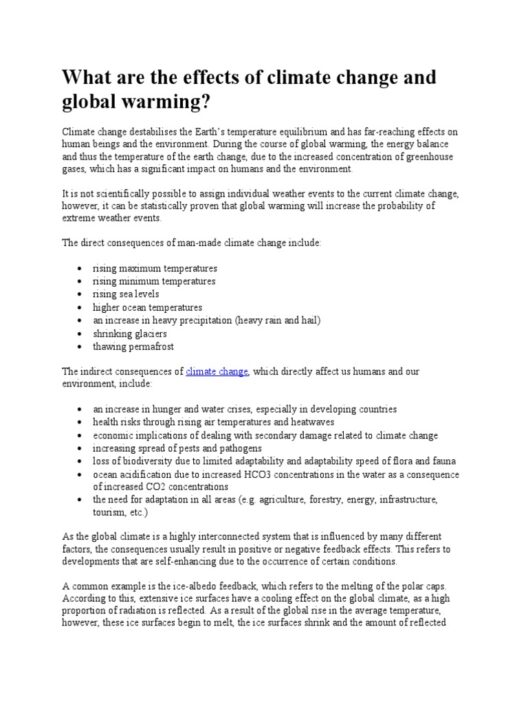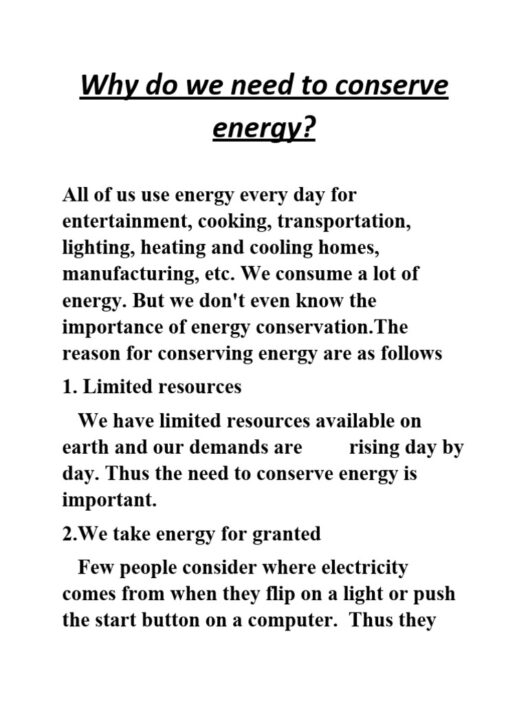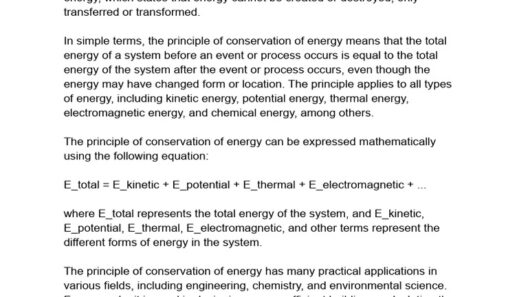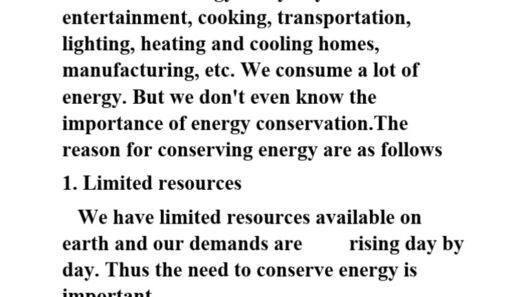The Law of Conservation of Energy is a fundamental principle that resonates across various scientific disciplines, especially in physics and environmental science. It posits that energy cannot be created or destroyed; it can only be transformed from one form to another. This concept is pivotal for understanding energy systems and their efficiency. In a world grappling with energy resources and sustainability, grasping the nuances of this law is essential. This article delves into the intricacies of the Law of Conservation of Energy, its implications in diverse contexts, and its significance in the pursuit of sustainable energy systems.
The essence of the law lies in the interconnectedness of energy forms. Whether it’s chemical energy in fossil fuels, kinetic energy in moving objects, or thermal energy in heat, the law affirms that the total amount of energy within a closed system remains constant. This inexorable reality underscores the delicate balance maintained within ecological systems and the immutable laws of thermodynamics. To illustrate, when we burn a log in a fireplace, the chemical energy housed within the wood transforms into heat (thermal energy) and light. While the visible manifestation of energy changes, the sum of energy within the system endures.
Exploring the implications of this law leads us to examine the various types of energy transformations that permeate our daily lives. From powering electronic devices to fueling vehicles, understanding these transformations is essential for optimizing how we use energy and for minimizing wastage.
Insight into Energy Types: Kinetic, Potential, and Beyond
When dissecting the Law of Conservation of Energy, one must confront the spectrum of energy types. The distinction primarily revolves around kinetic energy, the energy of motion, and potential energy, which is stored energy based on position or condition. For example, a drawn bow has potential energy poised to be unleashed as kinetic energy when the bowstring is released. Similarly, water stored in a dam possesses potential energy that can be converted into electricity as it flows downstream. These conversions are pivotal in energy systems, particularly in renewable energy technology.
In addition to kinetic and potential energy, there are other forms, including thermal energy, nuclear energy, and radiant energy. Each type presents unique challenges and opportunities in harnessing energy sustainably. The transition from fossil fuel energy to renewable sources such as solar, wind, and hydroelectric systems exemplifies this trend. Solar panels convert radiant energy from the sun directly into electrical energy, embodying the transformation dictated by the Law of Conservation of Energy. These technologies capitalize on natural processes, reducing reliance on finite resources while adhering to the law.
Understanding Efficiency: The Role of Energy Quality
While the Law of Conservation of Energy guarantees that energy amounts remain consistent within a system, it does not imply that all energy transformations are equally effective. The concept of energy quality emerges here, which refers to the usable energy available after transformations. High-quality energy, such as electricity, has greater potential for work compared to low-quality energy, like heat dissipating into the environment. Recognizing this distinction influences how engineers and scientists approach the design of energy systems.
The efficiency of an energy system hinges upon minimizing losses during transformation processes. For instance, in thermal power plants, the conversion of fossil fuel to electricity often results in significant heat loss. This inefficiency necessitates additional fuel input to meet energy demands. In contrast, innovative renewable designs like geothermal systems capture and utilize natural heat with minimal loss, epitomizing a more efficient energy practice.
The overarching urgency to transition toward sustainable energy systems underscores the need to engage with the law’s principles. Traditional energy systems are rapidly becoming unsustainable due to environmental degradation, contributing to climate change. As the global population continues to burgeon, so does the demand for energy, necessitating advancements in technology that align with the Law of Conservation of Energy while promoting sustainability.
Redefining Energy Systems: A Sustainable Future
In our quest for a sustainable future, the Law of Conservation of Energy serves not just as a theoretical guideline but as a pragmatic framework for evaluating energy systems. By understanding how energy transforms, we can innovate in areas such as energy storage technologies, smart grids, and increased energy efficiency measures. Battery technologies, particularly those utilizing lithium-ion cells, harness and store renewable energy for later use, ensuring that energy remains accessible even during low-production periods.
The challenge lies in creating systems that do not only aim to balance energy use but actively reduce reliance on carbon-intensive sources. Renewable energy transitions are not merely shifts in energy source but transformations dictated by the conservation law—every joule of energy produced from solar or wind technology comes from the energy available in these natural systems, aligned within the law’s constraints.
Finally, comprehending the Law of Conservation of Energy equips us with the analytical tools needed to navigate and comprehend the complexities of climate policy, energy markets, and technological innovations. The relevance of this law extends beyond mere academic interest; it serves as a clarion call for environmentally conscious decision-making in an era where sustainable energy practices are paramount. In additional to its scientific importance, the law fosters a deep appreciation for the delicate balance of our energy choices and their far-reaching consequences.



